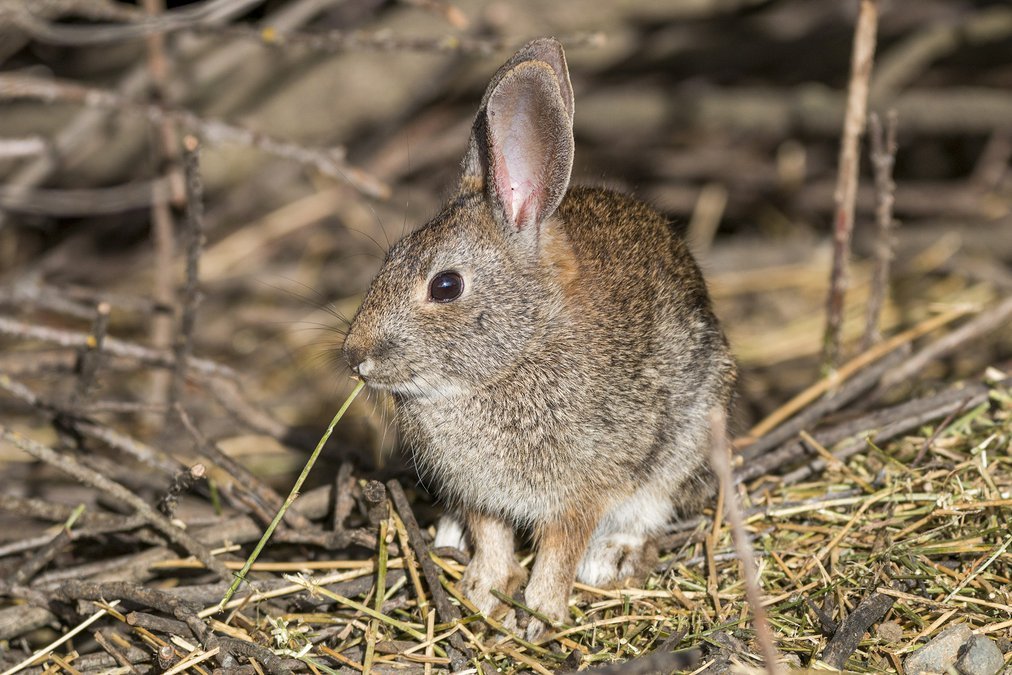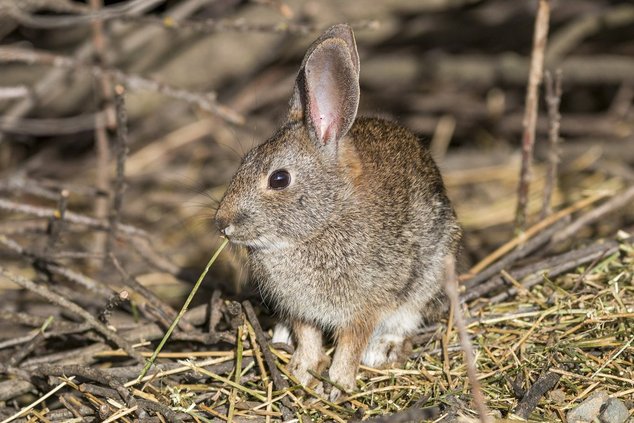Saving the endangered Riparian brush rabbits could also protect large swaths of rural south Manteca as well as part of Lathrop from flooding.
It is because efforts of the non-profit River Partners at the 2,100-acre Dos Rios Preserve located at the confluence of the Tuolumne and San Joaquin rivers to assist the rabbit subspecies, five endangered birds, and three endangered fish could also provide 10,000 acre feet of critical transient floodwater storage to reduce flood stages as far north as Stockton.
River Partners (www.riverpartners.org) is in the middle of a campaign to solicit donations qualifying for a dollar-for-dollar matching grant to help fund their efforts.
So far they are at $28,893 or 58 percent of the goal of $50,000 that would leverage $100,000 in funding. The matching gift has a deadline of Dec. 31.
The endangered species can currently access 1,000 acres of seasonally flooded lands.
While a plan has been developed to set back a federal levee to open up more habitat, it was determined there could be even greater flood benefit by leaving the levee in place and using controlled breaches when necessary.
The preserve is also being used to conduct groundwater research science as well as the ability of resorted floodplains to bolster freshwater conservation.
Riparian brush rabbits — an endangered subspecies found only along waterways in Southern San Joaquin County and Western Stanislaus County — could be a major flooding catastrophe away from extinction.
The 1997 floods that inundated 70 square miles south of Manteca, west of Ripon, and east of Tracy reduced known numbers at the time down to somewhere between 200 and 300.
The loss was particularly devastating at Caswell State Park on the Stanislaus River. It was there in the largest last remaining stand of natural riparian woodlands that many brush rabbits perished.
A year after the flood only one of the rabbits that as an adult reach 11 to 14 in length and weigh between 1 and 1.8 pounds was spotted at Caswell State Park.
Efforts to bring back the rabbits were initially focused mainly in the San Joaquin National Wildfire Refuge just across thew river form Caswell State Park with hew help of the River Partners. The addition the Dos Rios Preserve ha helped increase the number of rabbits to about 3,000.
The elusive riparian brush rabbit — once thought extinct — is continuing its battle for survival.
The January 1997 floods were literally and figuratively a watershed event for the survival of the rabbit that resembles the desert cottontail but is smaller with a darker, grassy brown coat minus a black tip on the ear as well as having a smaller and a less conspicuous tail.
Caswell State Park was home to an estimated 200 to 300 brush rabbits. It was the largest known concentration in the wild of the endangered species.
The reason was simple. Caswell is the largest stand of remaining riparian as roughly 97 percent had been destroyed by the creation of levees and farms. Riparian woodlands create the ideal cover for thick ground foliage the brush rabbits thrive in.
Combined efforts from the Endangered Species Recovery Program at California State University Stanislaus in Turlock, the US Fish and Wildfire Service, California Fish and Wildlife, the non-profit River Partners as well as the US Geological Survey have helped somewhat reverse the brush rabbit’s fortunes.
The riparian brush rabbit was detected in Paradise Cut some 22 plus years ago during a biological survey that was part of the environmental vetting process for the 15,001-home River Islands at Lathrop planned community.
Several dozen were captured, tagged and intermingled with the population at Caswell State Park. Brush rabbits were then returned to Paradise Cut where a 1,000-acre preserve has been set aside.
And while there haven’t been recent sightings in Paradise Cut it is likely because of their elusive nature.
The rabbits rarely stray more than several feet from where they burrow as well as find shelter and food among wild rose bushes, wild grapevines, as well as blackberry and similar vegetation. While green clover is their favorite food they also feast on grass, bark, vines, leaves, and other plants.
When flood work starts in Paradise Cut the developers of River Islands — Cambay Group — has already agreed to create numerous mounds within the preserve to provide high ground for the rabbits that are more conducive to their survival during flood waters than seeking higher ground on levees.
The brush rabbits were also reintroduced in 2005 at the Gallo wine family owned Faith Ranch abutting the riverside in Stanislaus County.
River Partners, which joined efforts to restore habitat to preserve a brush rabbit population at the San Joaquin Wildlife Refuge in the early 2000s, started their own brush rabbit restoration preserve at Dos Rios Ranch in 2014.
Having preserves on either side of the river to reconnect remnants of the ecology system are seen as key for the brush rabbit to expand its range as the years go by.
It is the same reason why River Islands did work along the San Joaquin River in a bid to create a better connection between Paradise Cut and other brush rabbit habitat.
The reintroduction of rabbits from captive breeding programs have helped push estimated numbers in the wild from 200 to 300 three decades ago to more than 3,000 today.
Thirty years ago, the brush rabbit’s range that once was believed to have been farther south along the San Joaquin River and boasted a population in excess of 110,000 was limited to South San Joaquin County. Their range now includes part of Stanislaus County.
While the brush rabbits are prolific between January and May with females being able to have up to four litters a year and giving birth to three or four young rabbits in each litter, the survival rate for those born in the wild are 1 in 6.
Although they have plenty of natural predators in the wild feral cats are believed to be the deadliest foes when it comes to their survival.
And while brush rabbits that are one of eight rabbit sub-species unique to California seldom venture more than a few feet from their favorite brush covering, they have been known during floods to climb trees.
To contact Dennis Wyatt, email dwyatt@mantecabulletin.com








